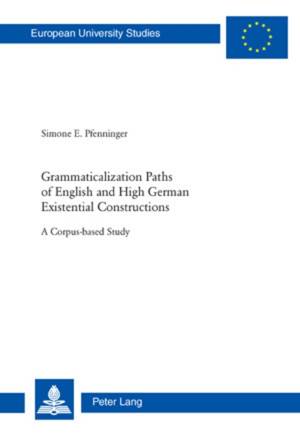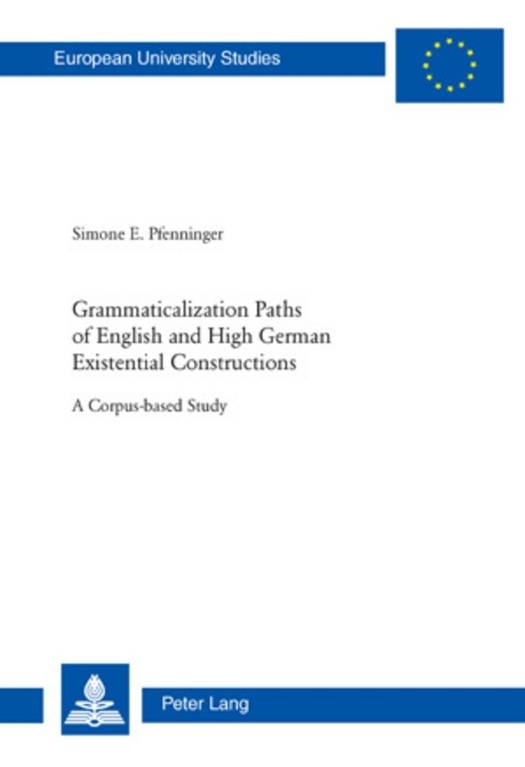
- Afhalen na 1 uur in een winkel met voorraad
- Gratis thuislevering in België vanaf € 30
- Ruim aanbod met 7 miljoen producten
- Afhalen na 1 uur in een winkel met voorraad
- Gratis thuislevering in België vanaf € 30
- Ruim aanbod met 7 miljoen producten
Zoeken
Grammaticalization Paths of English and High German Existential Constructions; A Corpus-based Study
A Corpus-based Study
Simone E Pfenninger
Paperback | Engels | Europäische Hochschulschriften / European University Studies / Publications Universitaires Européenn | nr. 345
€ 142,45
+ 284 punten
Omschrijving
Existential constructions are a fundamental feature of many Indo-European languages, and constructions with non-referential subjects have developed in all of the latter, albeit at different stages in their histories.
High German does not feature a prototypical existential construction that is equivalent in syntactic and pragmatic function and semantic meaning to the English existential there-construction. How did a prototypical existential structure originate in English? Why is it that High German has never developed such a construction? Has it ever shown a tendency towards developing one? How did two closely related languages such as English and High German come to differ so much with respect to these constructions?
By means of investigating a variety of historical and contemporary data this study shows that not only semantic, pragmatic and syntactic factors are involved, which decide the choice of a certain construction, but also very much the more general different linguistic development that the two languages underwent in the course of time.
High German does not feature a prototypical existential construction that is equivalent in syntactic and pragmatic function and semantic meaning to the English existential there-construction. How did a prototypical existential structure originate in English? Why is it that High German has never developed such a construction? Has it ever shown a tendency towards developing one? How did two closely related languages such as English and High German come to differ so much with respect to these constructions?
By means of investigating a variety of historical and contemporary data this study shows that not only semantic, pragmatic and syntactic factors are involved, which decide the choice of a certain construction, but also very much the more general different linguistic development that the two languages underwent in the course of time.
Specificaties
Betrokkenen
- Auteur(s):
- Uitgeverij:
Inhoud
- Aantal bladzijden:
- 370
- Taal:
- Engels
- Reeks:
- Reeksnummer:
- nr. 345
Eigenschappen
- Productcode (EAN):
- 9783034300216
- Verschijningsdatum:
- 8/06/2009
- Uitvoering:
- Paperback
- Formaat:
- Trade paperback (VS)
- Afmetingen:
- 155 mm x 224 mm
- Gewicht:
- 544 g

Alleen bij Standaard Boekhandel
+ 284 punten op je klantenkaart van Standaard Boekhandel
Beoordelingen
We publiceren alleen reviews die voldoen aan de voorwaarden voor reviews. Bekijk onze voorwaarden voor reviews.











